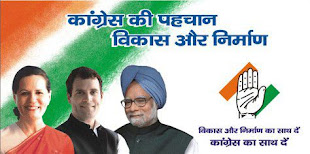Ashok Handoo
Judging by what the Finance Minister Shri Pranab Mukherjee told the Economic Editors Conference in New Delhi recently, the Indian economy is gaining momentum by the day and is on track to achieve the pre- economic crisis status soon. He justified his statement by quoting statistics. He was confident that the economy would touch the near 9 percent growth rate in the near future.
After achieving 9 % growth rate for a number of years, there was sudden downfall to 6.5 % in 2008-9, due to global economic slowdown. But thanks to the resilience of the Indian economy, growth rate kept on increasing every year. It touched 7.4 %, followed by 8.8 % and now we hope to return to 9 % growth rate in the next year to move forward to a double digit figure.
The Finance Minister attributed the phenomena to a number of factors, with underlying fundamentals of the economy being on the top. That this growth came about in a year when the country was faced with a sub-normal monsoon reflects the strengths of our economy’s fundamentals and its underlying dynamics, Shri Mukherjee said. This was cushioned by the impact of various fiscal and monetary policy measures taken by the Government and recovery, though at a slow rate, of the global economy.
Shri Pranab Mukherjee said the current growth is more broad-based with growth improving in all the three sectors - industry, service and agriculture. He pointed out that a decline in the share of agriculture in GDP has only made the Indian economy more resilient to cyclical changes. Within the agriculture sector too, we have been able to counterbalance the impact of rainfall deficit. Unlike in the past, a major deficiency in monsoons does not necessarily lead to a negative growth or decline in agriculture production. That indeed is quite reassuring.
Fiscal deficit too is coming down. It is expected to come down to 5.5 % as proportion of GDP, in the current year. Last year it stood at 6.7 %. The medium term Fiscal Policy Statement 2010-11 has outlined a decline in fiscal deficit to 4.8 per cent of GDP in 2011-12 and 4.1 per cent of GDP in 2012-13. This reflects the governments concern for adopting fiscal consolidation through prudent methods. No wonder then, that India is slowly coming out of the stimulus era with tax rebates being withdrawn, gradually. Shri Mukherjee said partial restoration of the tax cuts, compression in expenditure coupled with revenue from 3G auction and disinvestment would help in meeting fiscal targets for the current year.
Gross tax revenue has so far grown by 27.3 per cent, against a negative (-) 11.6 per cent last year. The total revenue receipt has increased by 85.0 per cent. Last year, it was a negative (-) 2.7 per cent. Total expenditure has grown by 30.4 per cent, as against 22.8 per cent achieved last year.
On the inflation front too there has been progress. The year 2010-11 started off with a headline inflation of 11.0 per cent in April. After remaining in double digits up to June 2010, it has moderated to reach 8.6 per cent in September 2010. It has come down to single digit level in all the three major groups- industrial workers, agricultural labour and rural labour. The main driver of inflation has been the high food prices. Measures taken by the Government to tackle the problem included, selective ban on exports and futures trading in rice and some pulses, zero import duty on select food items and removal of restrictions on licensing, stock limits and movement of food articles under the Essential Commodities Act. The Government permitted import of pulses and sugar by public sector undertakings and a higher quota of non-levy sugar was released.
In the export sector too the story is equally impressive. Exports jumped by a record 23 % in September, fastest in the last two years. Between April to September, exports aggregated to $103.3 billion, marking a 27 .6 % increase from the period, a year ago. It is because of this performance that the Commerce Minister Shri Anand Sharma recently expressed confidence that the country would be able to achieve the export target of $200 billion in the current fiscal. Of course, imports too are on the rise, causing a trade deficit of $13 billion in August, but that is a temporary phenomenon.
The Reserve Bank of India (RBI) also took measures as part of the monetary policy. It raised its key policy rates since April, 2009. On September 16 last, it raised the repo rate to 6.0 per cent and reverse repo rate to 5.0 per cent to check liquidity in the market.
A strong domestic demand and robust investment climate in the country has resulted in a surge in capital inflows which has put pressure on the Rupee, resulting in its appreciation in the last few months. But the finance Minister is not at all disturbed by it. He says huge FII inflows reflect foreigner’s confidence in the Indian growth story. Appreciation of the Rupee he believes is not abnormal. The Government thus seems to be inclined to face the situation as in the past, without taking stringent policy measures.
All this indicates that the economy is moving ahead on the right path. But inflation, though in single digit now, continues to be a cause of concern. But there is a silver lining in sight.


























0 Comments